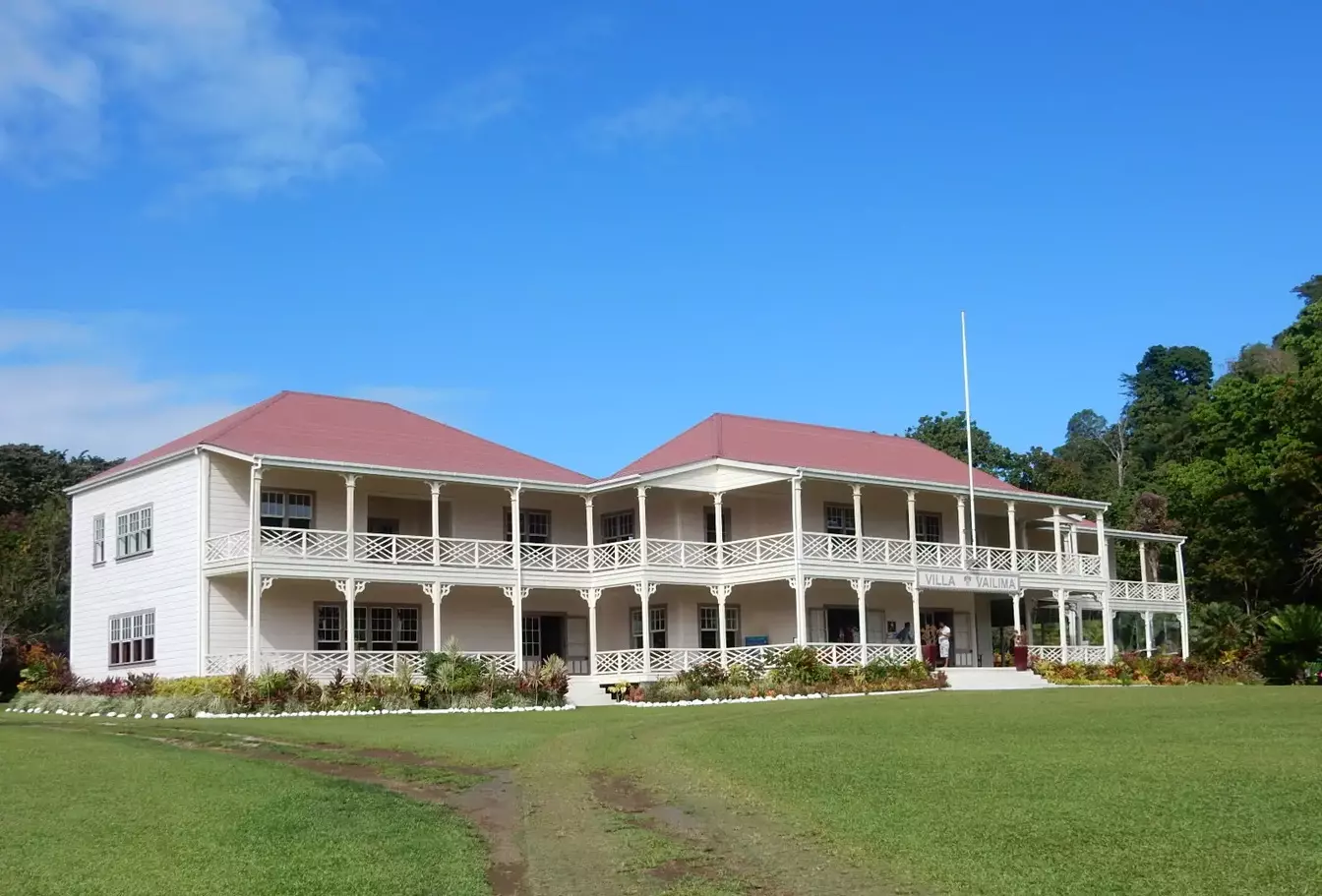
Robert Louis Stevenson Museum
Overall Rating: ⭐⭐⭐⭐☆ (4/5)
Rating Breakdown:
✔ Historical Significance – ⭐⭐⭐⭐☆ (4/5)
✔ Cultural Impact – ⭐⭐⭐⭐⭐ (5/5)
✔ Atmosphere & Maintenance – ⭐⭐⭐⭐☆ (4/5)
✔ Accessibility – ⭐⭐⭐⭐☆ (4/5)
✔ Tourist-Friendly – ⭐⭐⭐⭐☆ (4/5)
Weather
- Tropical climate with warm temperatures year-round; expect humidity and occasional rain showers.
Tags
- Historical Site, Museum, Literary Landmark, Botanical Gardens
Timings
- Monday to Friday: 9:00 AM – 3:30 PM
Saturday: 9:00 AM – 12:00 PM
Closed on Sundays and public holidays
Time Required
- 1.5 to 2 hours
Entry Fee
- 20 Samoan Tala (WST) per adult
Children under 12: Free
Things to See & Do
- Guided Tours – Gain insights into Robert Louis Stevenson’s life and works through knowledgeable guides.
- Historic Mansion – Explore the well-preserved colonial residence with original furnishings and artifacts.
- Botanical Gardens – Stroll through lush gardens surrounding the estate, featuring tropical flora.
- Gift Shop – Purchase souvenirs and literature related to Stevenson’s legacy.
Best Time to Visit
- Morning Hours for cooler temperatures and fewer visitors.
- Dry Season (May to October) offers more comfortable weather conditions.
Nearest Parking Spots
- On-site parking available for visitors.
- Additional street parking along Cross Island Road.
Overview
- Literary Heritage – The museum is housed in Vailima, the former residence of Scottish author Robert Louis Stevenson, renowned for classics like Treasure Island and Dr. Jekyll and Mr. Hyde.
- Cultural Significance – Stevenson, affectionately known as “Tusitala” (Teller of Tales) by locals, spent his final years in Samoa, deeply immersing himself in the local culture.
- Architectural Charm – The colonial-style mansion showcases period architecture, offering a glimpse into 19th-century tropical living.
- Educational Experience – Exhibits include personal belongings, photographs, and manuscripts, providing a comprehensive look at Stevenson’s life and literary contributions.
- Serene Environment – Set against the backdrop of Mount Vaea, the estate offers a tranquil setting for reflection and exploration.
- Main House – The restored mansion featuring Stevenson’s personal quarters and library.
- Gardens – Expansive lawns and tropical gardens meticulously maintained for public enjoyment.
- Veranda – Offers panoramic views of the surrounding landscape, a favorite spot of Stevenson.
- Family Gravesite – Stevenson’s tomb is located atop Mount Vaea, accessible via a hiking trail from the property.
- In 1890, seeking a climate beneficial for his health, Robert Louis Stevenson settled in Samoa and built the Vailima estate.
- He became an integral part of the Samoan community, advocating for indigenous rights and engaging in local affairs.
- Stevenson passed away in 1894 and was buried atop Mount Vaea, overlooking his cherished home.
- The residence was later converted into a museum to honor his legacy and contributions to literature and Samoan society.
- Today, the museum stands as a testament to the enduring bond between Stevenson and the people of Samoa.
- The two-story colonial mansion features a blend of European design and tropical adaptations.
- Wide verandas encircle the building, providing shade and promoting airflow.
- High ceilings and spacious rooms are adorned with period furnishings and décor.
- The use of local timber and materials reflects a harmonious integration with the environment.
- Restoration efforts have preserved the original structure, maintaining its historical integrity.
- Wear Comfortable Footwear – Essential for exploring the mansion and gardens; sturdy shoes recommended for the Mount Vaea trail.
- Stay Hydrated – Carry water, especially if planning to hike to Stevenson’s tomb.
- Photography – Allowed inside the museum; flash photography may be restricted.
- Respect the Property – As a historical site, ensure to follow guidelines provided by staff.
- Check for Events – Occasionally, the museum hosts cultural events and exhibitions; inquire ahead of your visit.
- Location – Situated on Cross Island Road, approximately 5 kilometers south of Apia’s city center.
- By Taxi – Readily available from Apia; the journey takes about 10–15 minutes.
- By Car – Follow Cross Island Road heading south; clear signage leads to the museum entrance.
- Public Transport – Limited bus services operate on this route; taxis or private transport are more reliable.
- Parking Availability – Ample on-site parking for visitors.